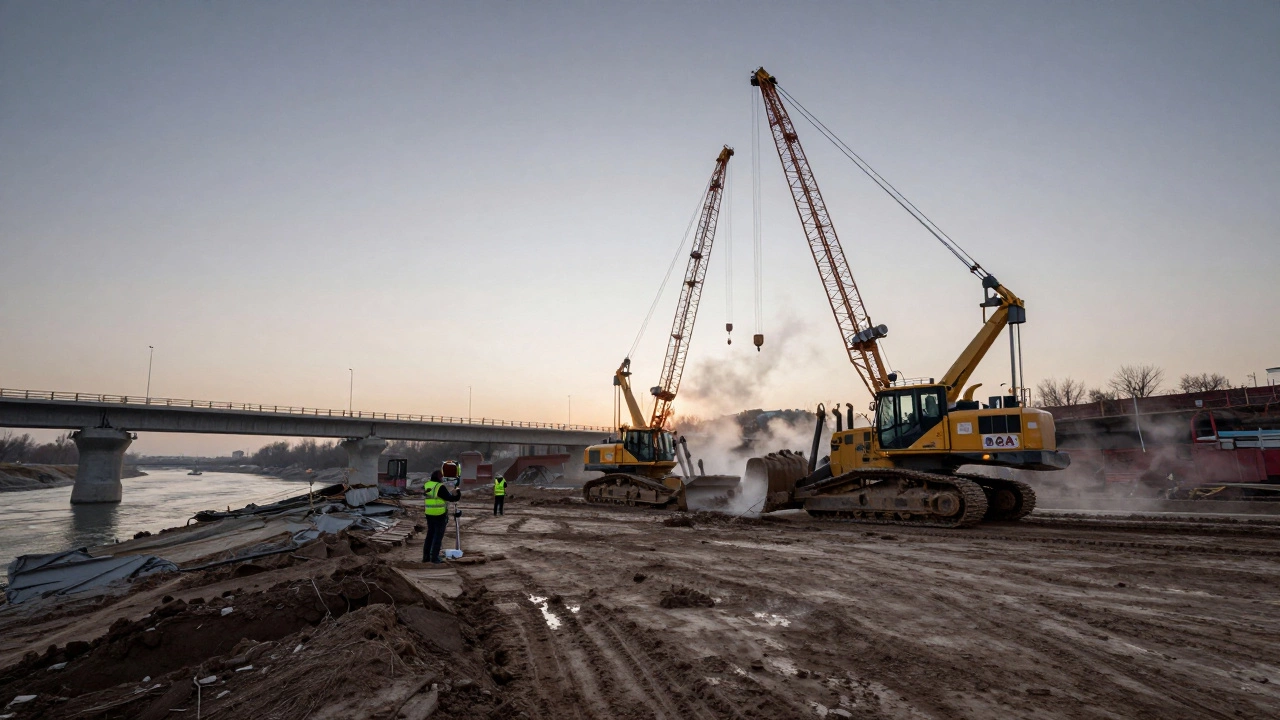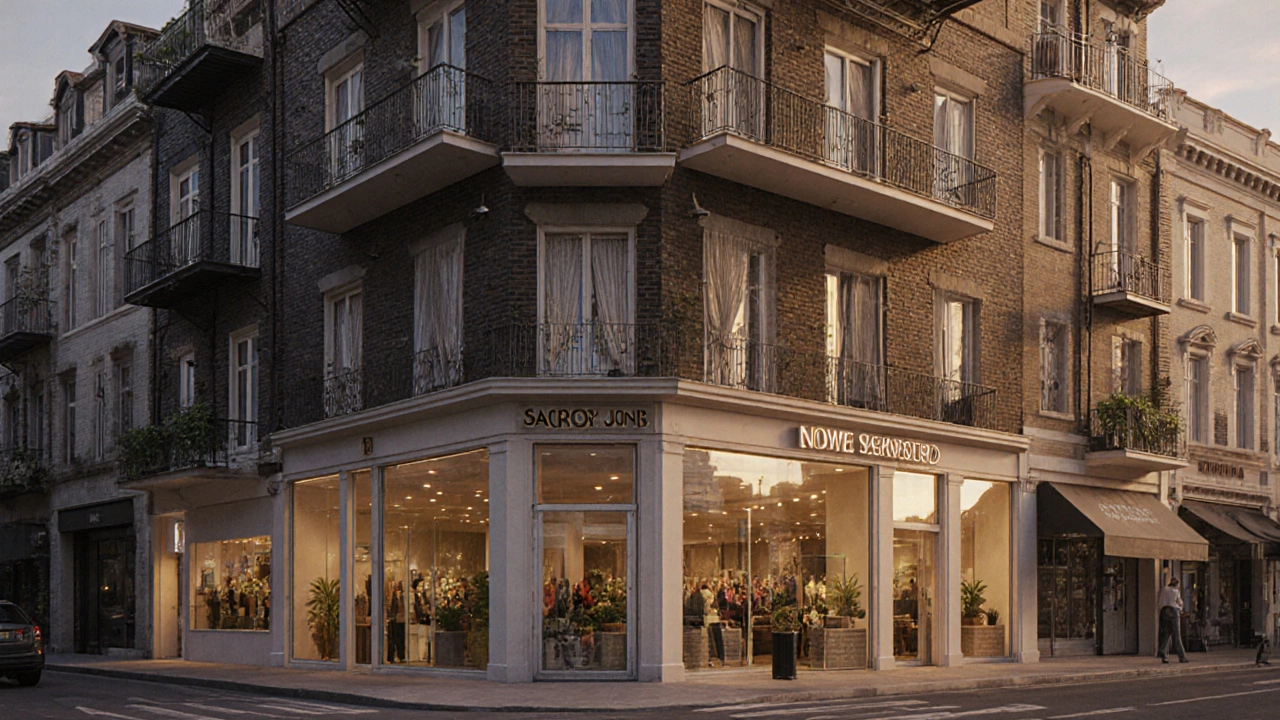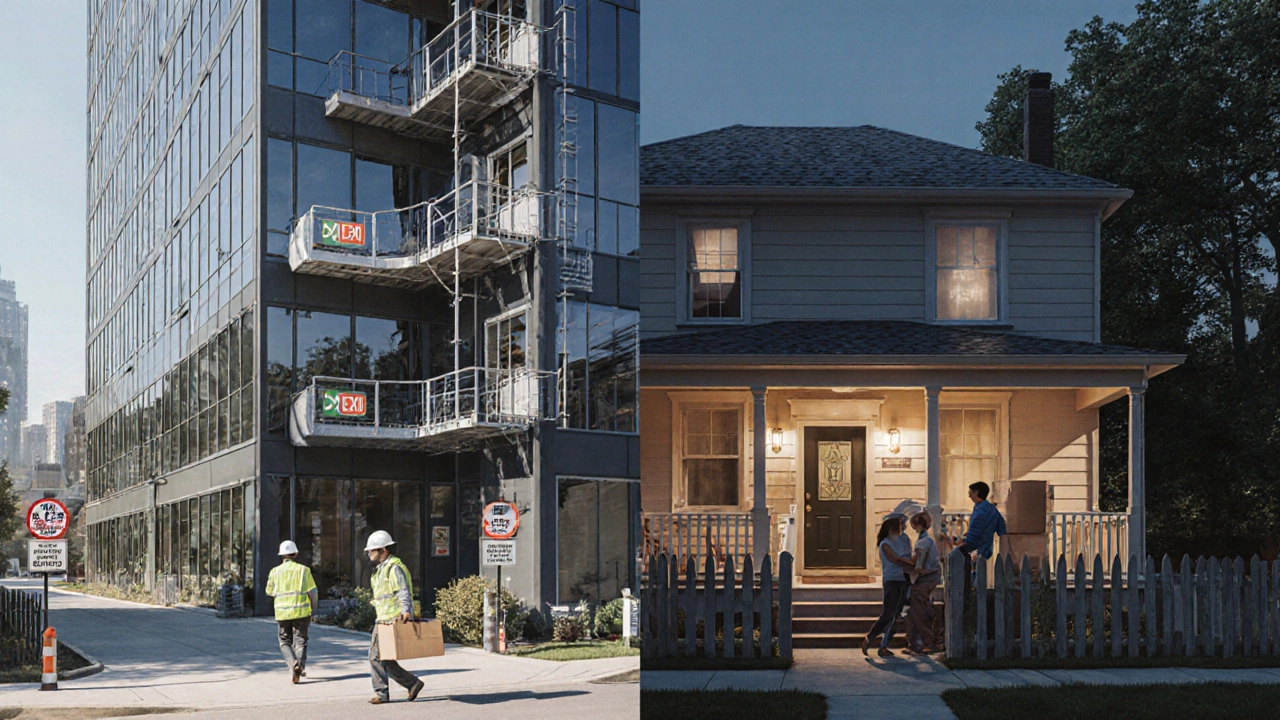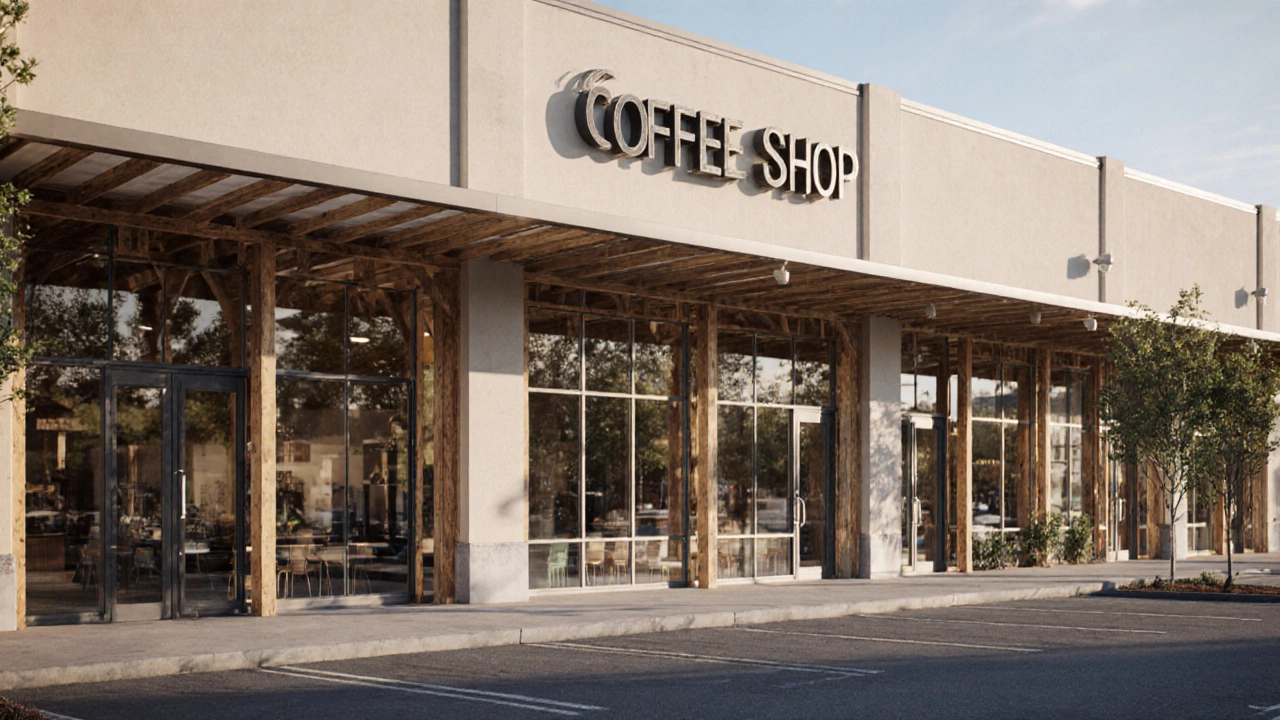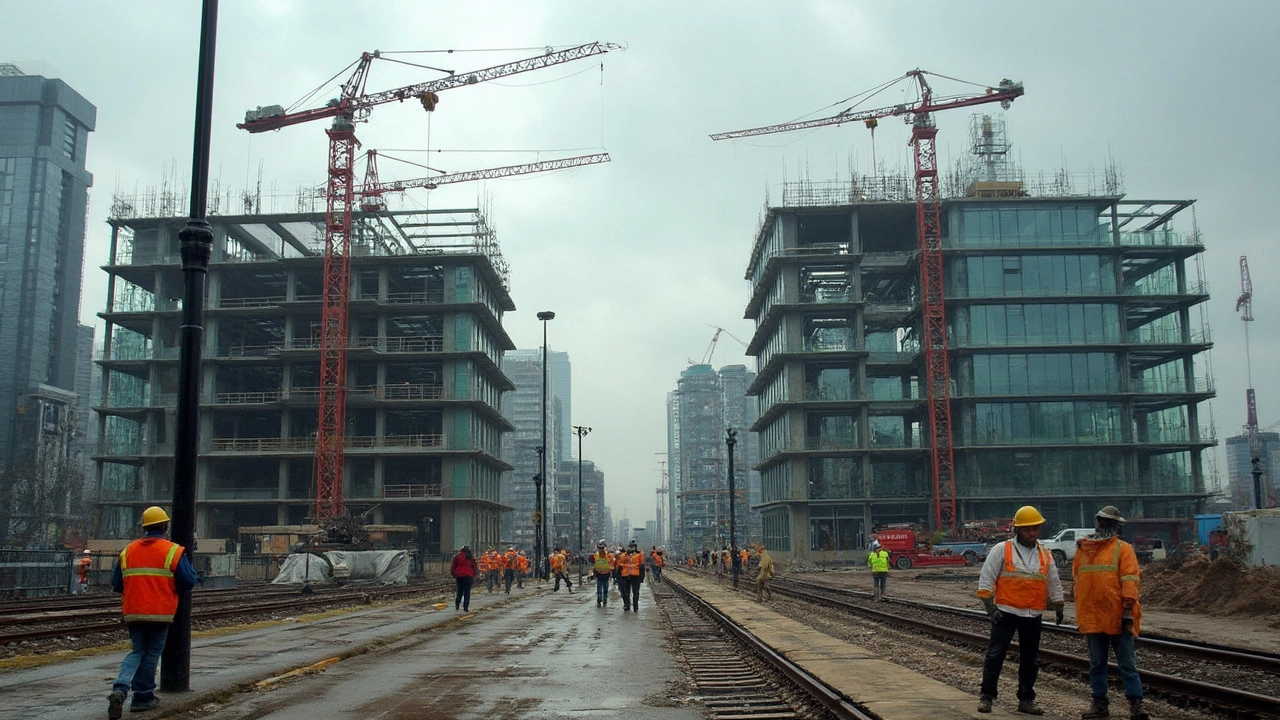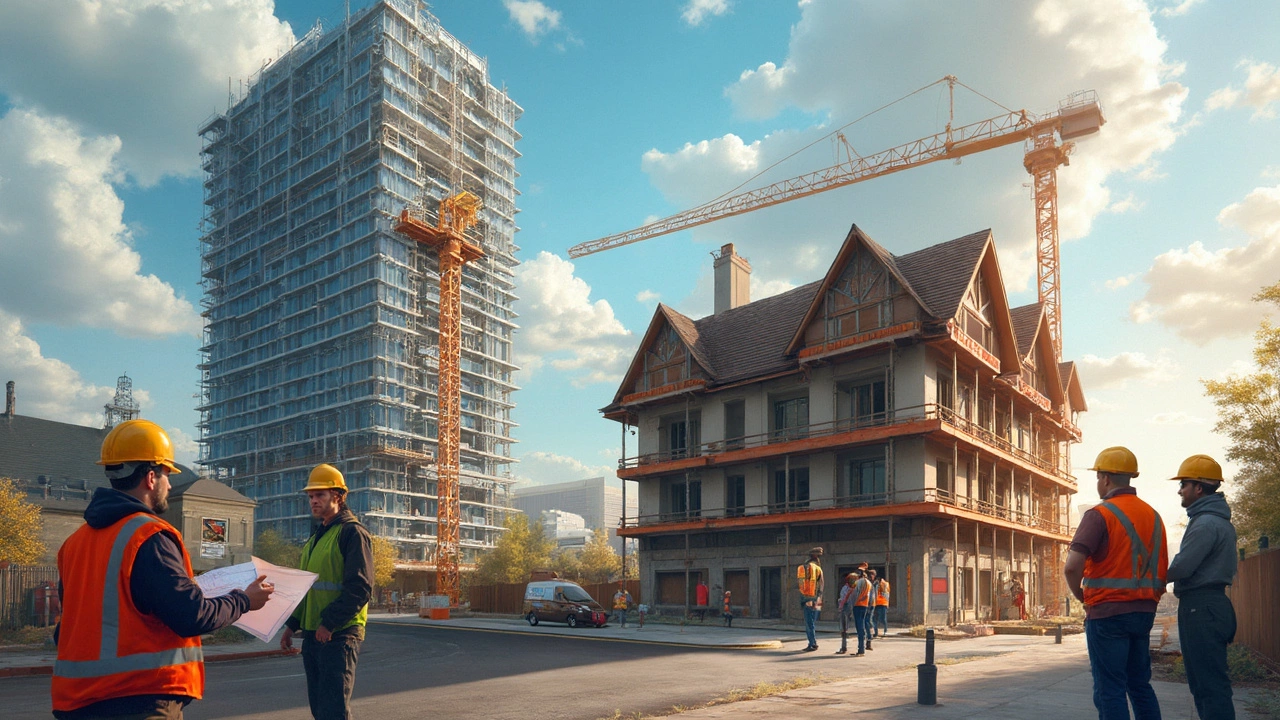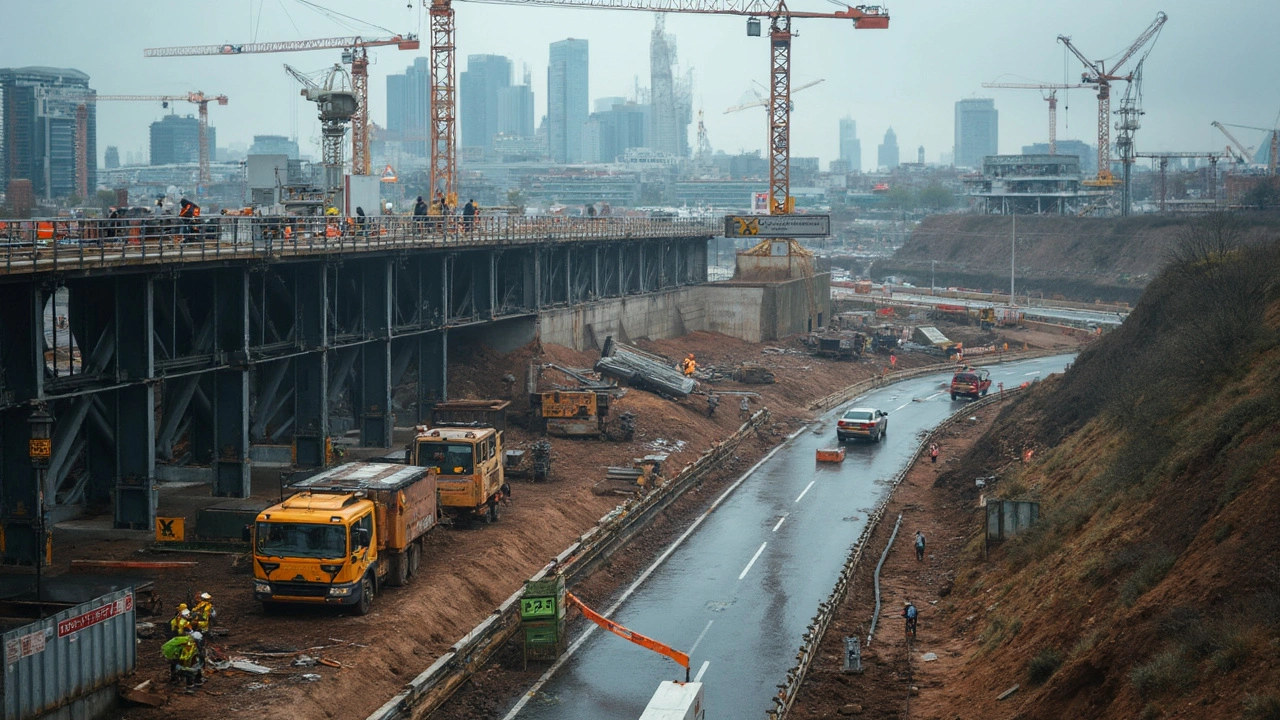Commercial Construction: Practical Tips, Rules, and Flooring Ideas
If you’re planning a new office, shop, or warehouse, the first thing you’ll hear is "commercial construction". It sounds big, but breaking it down into bite‑size steps makes it doable. Below you’ll find the most useful info to keep your project on track, from choosing the right building type to sorting out permits and picking the perfect floor.
Pick the Right Construction Type for Your Business
Commercial buildings aren’t all the same. A steel‑frame office tower, a wood‑framed retail shop, and a concrete warehouse each have their own strengths. Think about what matters most for your use:
- Load‑bearing needs: Heavy equipment or lots of foot traffic call for stronger columns and floors.
- Fire safety: Some codes demand fire‑resistant walls or sprinkler systems, especially for public spaces.
- Future changes: If you might expand later, a modular design can save time and money.
When you match the construction type to your business goals, you avoid costly redesigns down the line.
Navigate Permits, Zoning, and Regulations
In the UK, every commercial project must meet local planning rules. First, check the zoning map for your site – it tells you whether an office, shop, or mixed‑use building is allowed. Next, apply for a Building Regulations approval; this covers fire safety, structural stability, and accessibility.
A quick tip: talk to the council early. A short meeting can reveal hidden restrictions like height limits or required parking spaces, saving you weeks of back‑and‑forth.
Don’t forget insurance. Commercial construction insurance typically covers site damage, public liability, and contract works. Knowing what’s covered helps you budget for unexpected events.
Now that the legal side is clear, let’s talk about the heart of any commercial space – the flooring.
Choosing Flooring That Works for Commercial Spaces
Flooring isn’t just about looks; it affects durability, safety, and even employee comfort. Here are three solid options:
- Commercial‑grade carpet tiles: Ideal for offices where noise reduction matters. They’re easy to replace if a single tile gets stained.
- Vinyl composition tiles (VCT): Perfect for high‑traffic areas like retail aisles. They resist scratches and are simple to clean.
- Polished concrete: Great for warehouses or modern showrooms. It’s tough, low‑maintenance, and can be stained for a pop of colour.
Ask your flooring supplier about slip‑resistance ratings – they’re required by health and safety law for many commercial settings.
Finally, keep an eye on the project timeline. Commercial builds often run on tight schedules, so choose a flooring system that can be installed quickly without sacrificing quality.
By understanding the construction type, handling permits early, and picking the right floor, you set your commercial project up for success. Need more help? Our team at First Choice Flooring can guide you through every step, from design to installation, ensuring your space looks great and meets every rule.
What Is the Difference Between Civil and Commercial Construction?
- Gavin Whitaker
- |
- |
- 0
Civil construction builds infrastructure like roads and bridges, while commercial construction creates buildings for business use like offices and stores. Learn how their goals, regulations, timelines, and teams differ.
View moreWhat Does Civil Construction Include? A Clear Breakdown of Key Components
- Gavin Whitaker
- |
- |
- 0
Civil construction includes roads, bridges, water systems, sewage networks, and public transit - the essential infrastructure that keeps cities running. Learn what’s included and how it differs from commercial building projects.
View moreWhat Makes a Building Commercial? Key Features That Define Commercial Properties
- Gavin Whitaker
- |
- |
- 0
A building becomes commercial not by how it looks, but by how it's used - for profit-driven activities like retail, offices, or hospitality. Zoning, building codes, and insurance all change when a space crosses from residential to commercial use.
View moreWhat Does Civil Construction Include? A Clear Breakdown of Key Components
- Gavin Whitaker
- |
- |
- 0
Civil construction includes roads, bridges, water systems, stormwater control, and public utilities. It's the infrastructure that keeps communities running, built by public funds and designed for long-term safety and function.
View moreCommercial vs Residential Construction: Which Is Better for Your Project?
- Gavin Whitaker
- |
- |
- 0
Commercial and residential construction serve very different purposes. Learn the key differences in cost, timeline, financing, and risk to decide which type of building is better for your goals.
View moreWhat Is Type 5 Building Construction? Understanding Wood-Framed Structures in Commercial Use
- Gavin Whitaker
- |
- |
- 0
Type 5 building construction uses wood framing for small commercial buildings like retail stores and clinics. Learn how it works, where it's allowed, fire safety rules, and what to check before leasing or buying.
View moreCommercial vs Non-Commercial: Clear Definitions, Practical Examples & Key Differences
- Gavin Whitaker
- |
- |
- 0
What separates commercial from non-commercial in construction, business, and daily life? Understand the differences, see how these categories impact rules, money, and your own projects.
View moreIndustrial and Commercial Construction: Are They Really the Same?
- Gavin Whitaker
- |
- |
- 0
Ever wondered if industrial and commercial construction are just two names for the same thing? This article digs into what actually separates these two huge pieces of the construction world. You'll find out how their projects, needs, and even teams can be very different. Plus, there are helpful tips for anyone thinking about a new building or trying to pick the right contractor. Get ready for some real talk that clears up the confusion.
View moreCommercial vs Non-Commercial: What Sets Them Apart in Construction?
- Gavin Whitaker
- |
- |
- 0
This article breaks down the real differences between commercial and non-commercial buildings in the world of construction. You'll find out what makes a project count as commercial, how regulations and codes change based on the type, and why these differences matter for contractors and owners. We've included facts about zoning, permits, and costs, along with tips for handling the main challenges on each side. Let’s clear up the gray areas and make sense of where your project lands.
View moreCommercial Structure Types: What Construction Means for Your Business
- Gavin Whitaker
- |
- |
- 0
Choosing the type of construction for a commercial structure is more than just picking out materials—it's about meeting safety codes, insurance guidelines, and long-term cost concerns. This article breaks down commercial construction types, from steel to wood frames and beyond. You'll see why the materials and methods matter for everything from fire safety to how much you pay for coverage. Find out how to tell what type your building is—and what that means for your next project.
View moreHeavy Civil: What Really Counts in Commercial Construction
- Gavin Whitaker
- |
- |
- 0
Wondering what 'heavy civil' means in construction? This article breaks down exactly which projects qualify, like highways, bridges, and water treatment plants—plus why it matters for bidding, safety, and costs. Get practical tips to spot heavy civil work on job sites and learn why these projects have their own rules and challenges. Find out what sets them apart from regular commercial buildings, using plain and clear language. Anyone in the construction field or just plain curious will understand what’s really behind the term 'heavy civil.'
View moreWhat Is Classified as Commercial? Commercial Construction Explained
- Gavin Whitaker
- |
- |
- 0
This article breaks down what counts as commercial in the construction industry. It highlights the types of properties classified as commercial, the rules that shape these buildings, and how they differ from residential spaces. You'll also get tips about zoning, building codes, and placement of mixed-use properties. With straightforward examples and practical advice, you'll know exactly where the commercial line is drawn.
View more